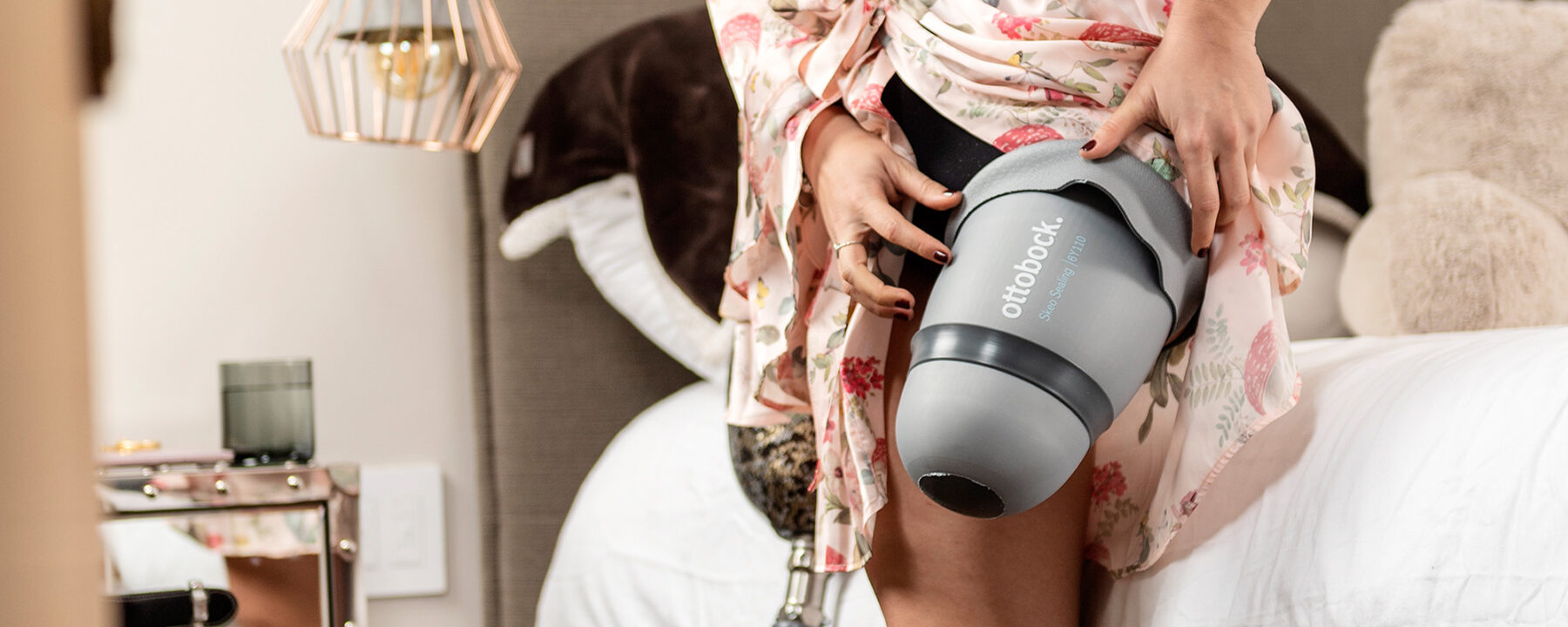
Physio Facts - Liners - Prosthetic Interfaces
Liners - Prosthetic Interfaces
The world of the prosthetic interface is a minefield of choices! As with any choice, it’s good to know a little bit about the options available. It could be that some options may not be suitable for your type of amputation. It will be up to your prosthetist to judge which will suit you best but here is a little insight into what may lie ahead of you.
Let’s start with a basic pelite liner and sock. The pelite is a bit like a hard foam that’s in the shape of your residual limb. It is worn with socks – these are available in varying thicknesses. This is a good choice if your residual limb isn’t very stable as you can use the socks to bulk out your prosthesis if necessary in order to achieve the correct fit. Of course, you can also tailor this in the other direction and use fewer socks if this obtains the correct fit for you.
Skin suction is where you don’t wear anything between your skin and your socket. You put a slidey sock over your residual limb and then pop the limb into the socket. There is a valve at the bottom of the socket that you take out before pulling the sock through to suction the limb in. Once the whole sock has been pulled through the socket and off your limb you close the valve and off you go.
A popular choice is silicone and gel liners. There are soooo many different types and brands to choose from but as an overview there are pin liners, suction liners and cushion liners. A pin liner has a pin at the bottom which clicks into the base of your socket, as well as a button to release the pin when you want to take it off. A suction liner has a band of silicone on the outside that is slightly larger than the limb. You can spray this to slide it into the socket and it pushes the air out through a one way valve. The cushion liners work in a similar way to the suction liners but use a secondary knee sleeve over the top of the socket on to the thigh to create the seal.
The design of silicone can differ depending on the make and size. Some have a thick corrugated band, others are repeated thin lines or a band that you pull on over the liner and can adjust the seal height. Silicone provides a great option for a liner as it provides high stability and good adhesion if your limb has a lot of soft-tissue. You can also get polyurethane liners that are very good at distributing pressure within a socket, as well as copolymer liners which are soft, cushiony and highly elastic, offering good protection for low activity and dry skin.
A lanyard system is another way of attaching you prosthesis. You still wear a silicone/gel liner but instead of being held on by a pin or suction, you feed a strap through a hole in the socket and fix it to the outside to hold your limb in place. It helps pull the leg into the correct position and reduces pistoning within the socket.
There are also some prosthetic interfaces that are specific to the upper limb. One is a soft harness, bearing a resemblance to backpack straps, which helps to take the weight of the prosthetic. It distributes the weight so that you don’t become uneven and provides more stability.
I hope that helps you gain a basic understanding of the different types of prosthetic interfaces out there and understand the choices that your prosthetist may make for you.
Please email Beth with any questions you may have - bethl@dorset-ortho.com
